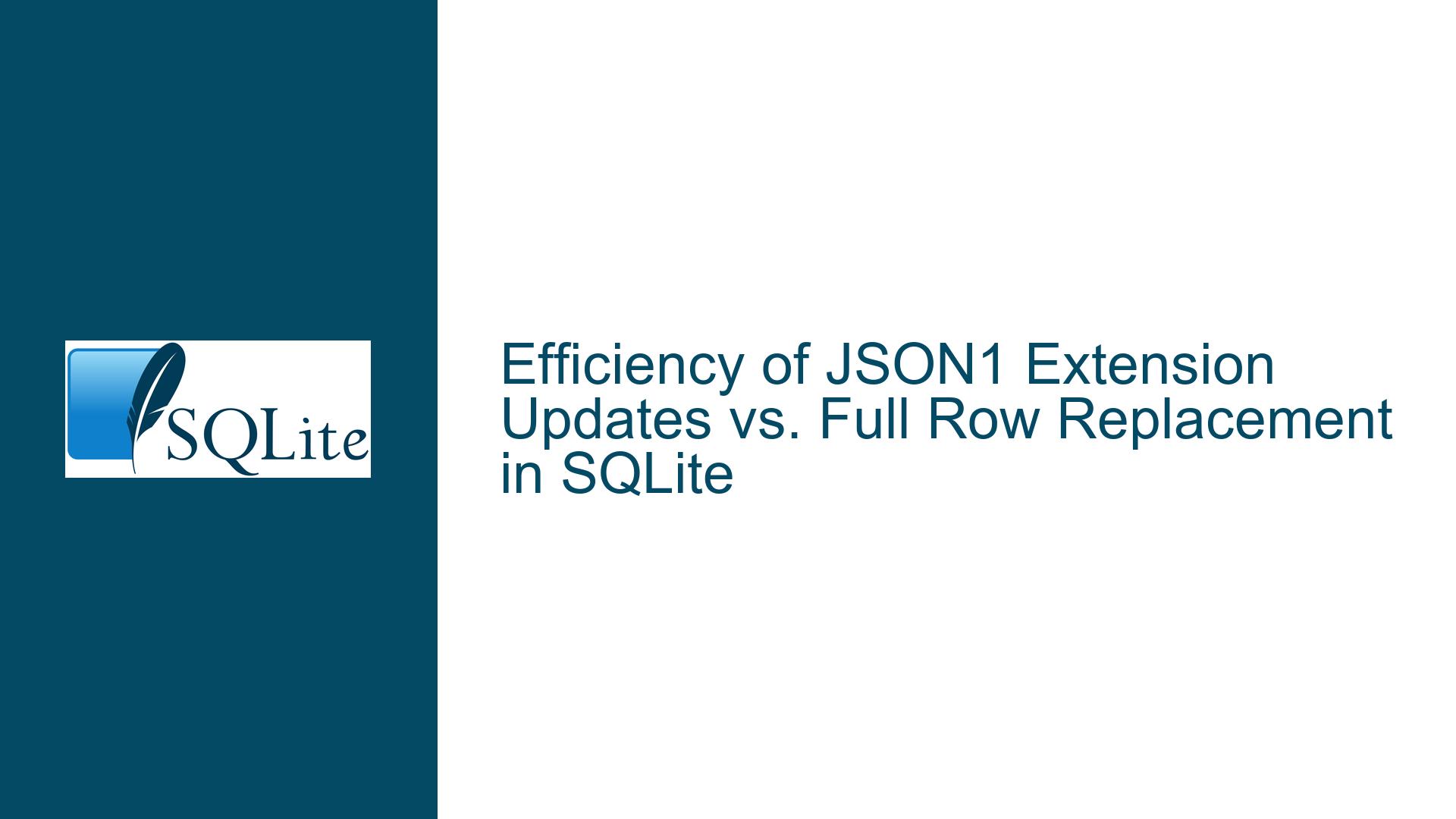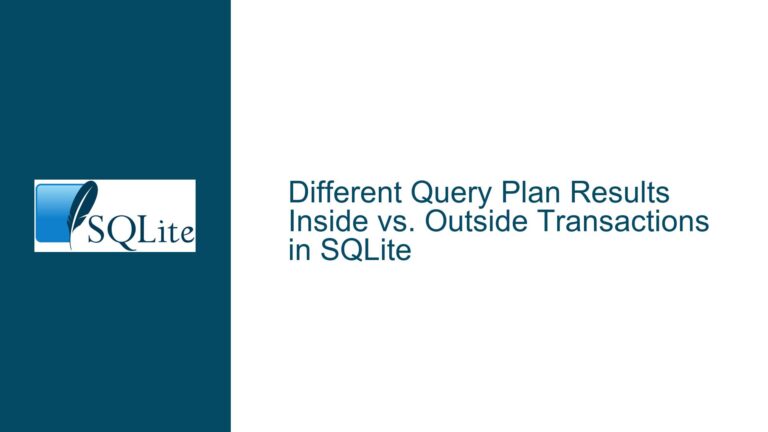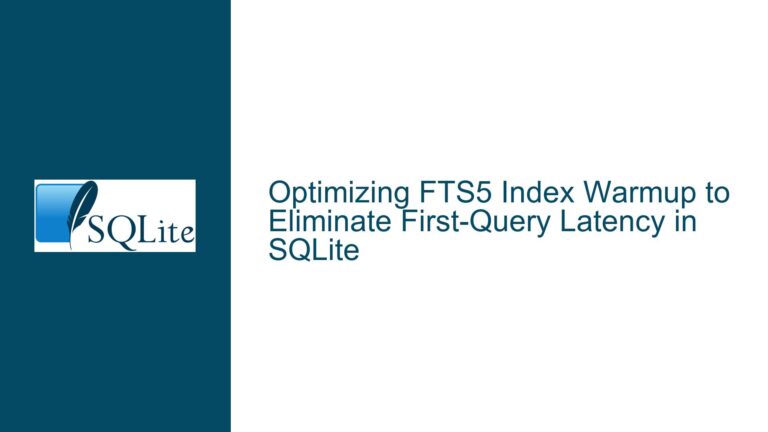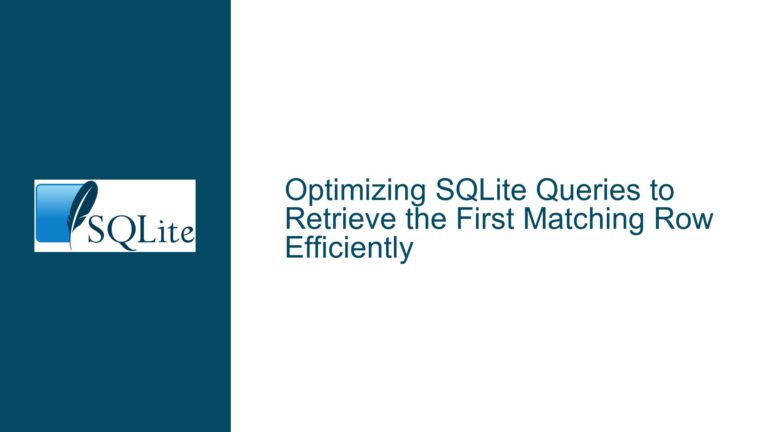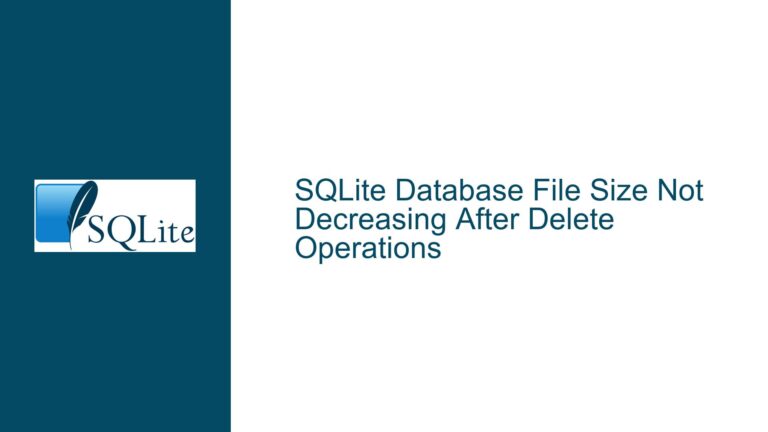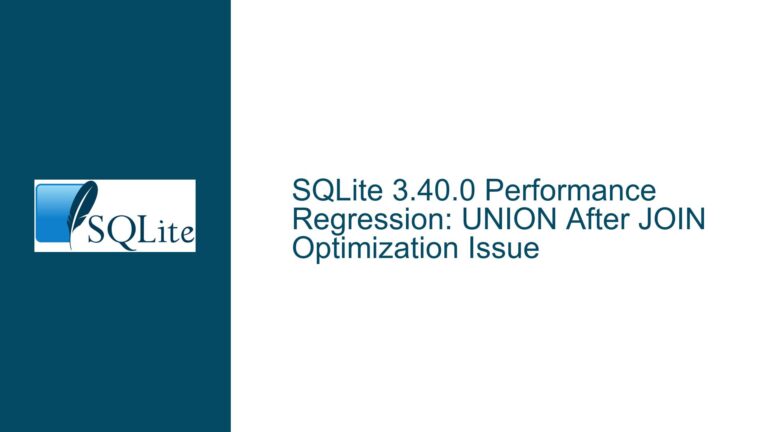Efficiency of JSON1 Extension Updates vs. Full Row Replacement in SQLite
JSON1 Extension Updates and Full Row Replacement in SQLite
When working with SQLite and the JSON1 extension, understanding the efficiency of updating JSON properties versus replacing the entire row is crucial for optimizing database operations. This analysis delves into the mechanics of both approaches, their potential performance implications, and the underlying processes that dictate their efficiency.
In SQLite, the JSON1 extension provides functions to manipulate JSON data stored in text fields. When updating a JSON property, the database must retrieve the entire record, parse the JSON string, modify the relevant property, and then rewrite the entire record. This process involves several steps that can impact performance, especially when compared to simply replacing the entire row with a new JSON string.
The primary consideration is whether the overhead of parsing and modifying the JSON string within SQLite is more or less efficient than replacing the entire row. This decision can significantly affect the performance of applications that frequently update JSON data, particularly in scenarios where the JSON strings are large or the updates are frequent.
Interplay Between JSON Parsing, Record Retrieval, and I/O Operations
The efficiency of updating JSON properties versus replacing the entire row in SQLite is influenced by several factors, including the complexity of the JSON string, the size of the record, and the underlying I/O operations. When a JSON property is updated using the JSON1 extension, SQLite must perform the following steps:
- Record Retrieval: The entire record containing the JSON string must be retrieved from the database. This involves reading the relevant page from disk if it is not already in the connection page cache.
- JSON Parsing: The JSON string is parsed to locate the property that needs to be updated. This step can be computationally expensive, especially for large or complex JSON strings.
- Property Modification: The identified property is modified, and the JSON string is recomposed.
- Record Rewriting: The entire record, including the modified JSON string, is rewritten to the database. This involves writing the entire page back to disk if any part of the page has changed.
In contrast, replacing the entire row with a new JSON string involves fewer steps:
- Record Replacement: The entire row is replaced with a new JSON string. This operation does not require parsing or modifying the JSON string within SQLite.
- Record Rewriting: The new record is written to the database, which involves writing the entire page back to disk if any part of the page has changed.
The key difference between the two approaches lies in the parsing and modification of the JSON string. When using the JSON1 extension, these steps are performed within SQLite, which can introduce additional overhead. However, when replacing the entire row, these steps are bypassed, potentially leading to faster operations.
Optimizing JSON Updates and Row Replacements in SQLite
To determine the most efficient approach for updating JSON data in SQLite, it is essential to consider the specific requirements of the application and the characteristics of the data. The following steps and solutions can help optimize the performance of JSON updates and row replacements:
Benchmarking Both Approaches: The first step in optimizing JSON updates is to benchmark both approaches using realistic data and workloads. This involves measuring the time taken to update JSON properties using the JSON1 extension and comparing it to the time taken to replace the entire row. The results of these benchmarks can provide valuable insights into which approach is more efficient for the specific use case.
Minimizing JSON Parsing Overhead: If the JSON1 extension is used to update properties, it is important to minimize the overhead associated with parsing and modifying the JSON string. This can be achieved by optimizing the JSON structure to reduce complexity and by using efficient parsing algorithms. Additionally, caching parsed JSON objects in memory can help reduce the need for repeated parsing.
Leveraging SQLite’s I/O Optimizations: SQLite includes several optimizations that can reduce the I/O overhead associated with updating records. For example, SQLite may avoid rewriting pages that have not changed, even if the record within the page has been modified. Understanding and leveraging these optimizations can help improve the performance of both JSON updates and row replacements.
Batch Updates and Transactions: When performing multiple updates, batching them within a single transaction can significantly reduce the I/O overhead. This is because SQLite only needs to write the changes to disk once at the end of the transaction, rather than after each individual update. This approach can be particularly beneficial when updating multiple JSON properties or replacing multiple rows.
Choosing the Right Approach Based on Data Characteristics: The decision to use the JSON1 extension or to replace the entire row should be based on the characteristics of the data and the specific requirements of the application. For example, if the JSON strings are small and the updates are infrequent, the overhead of parsing and modifying the JSON string may be negligible. However, if the JSON strings are large or the updates are frequent, replacing the entire row may be more efficient.
Monitoring and Tuning: Finally, it is important to continuously monitor the performance of the database and tune the approach as needed. This involves regularly reviewing the performance metrics, identifying bottlenecks, and making adjustments to the database schema, indexing, or update strategy as necessary.
In conclusion, the efficiency of updating JSON properties versus replacing the entire row in SQLite depends on several factors, including the complexity of the JSON string, the size of the record, and the underlying I/O operations. By benchmarking both approaches, minimizing JSON parsing overhead, leveraging SQLite’s I/O optimizations, batching updates, and choosing the right approach based on data characteristics, it is possible to optimize the performance of JSON updates and row replacements in SQLite. Continuous monitoring and tuning are also essential to ensure that the database continues to perform efficiently as the data and workload evolve.
